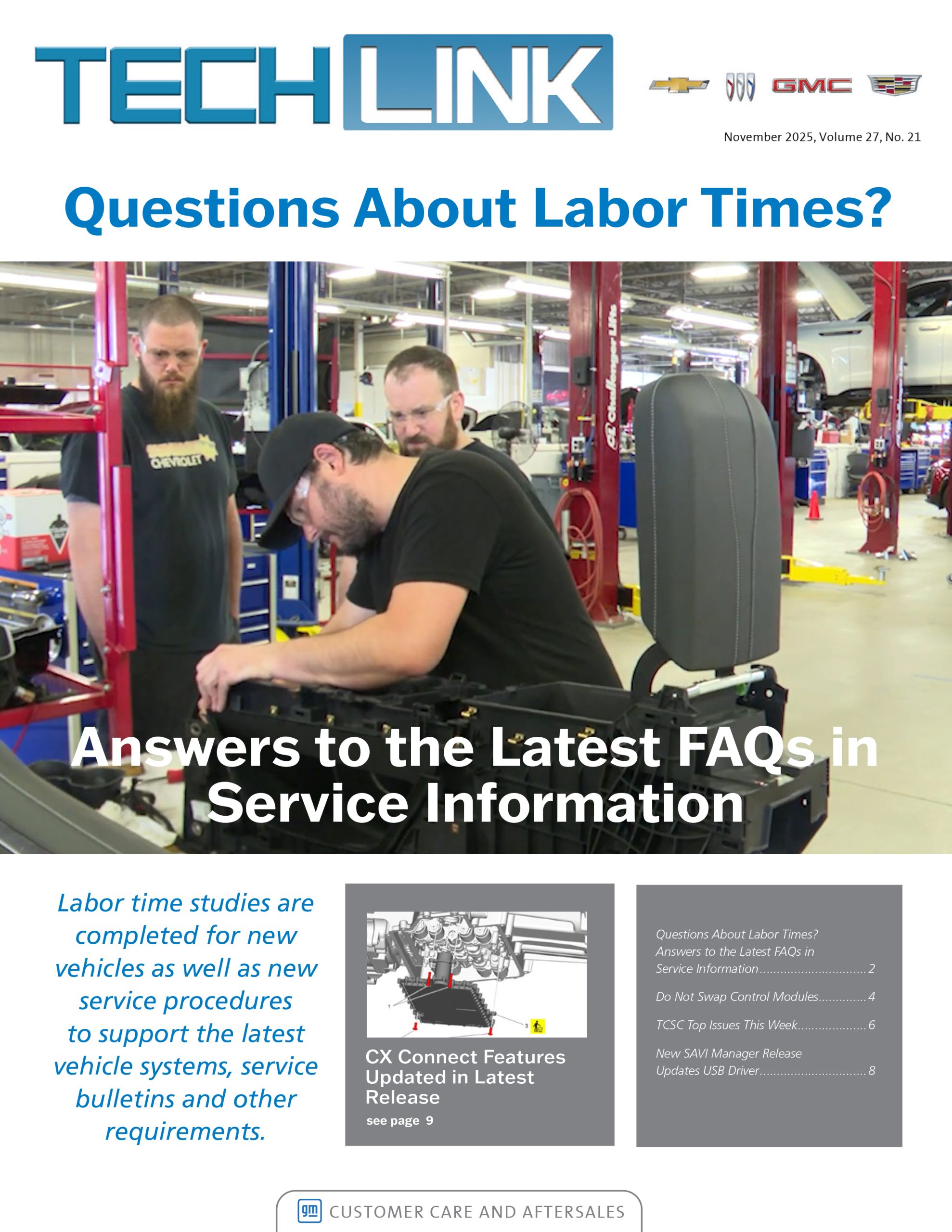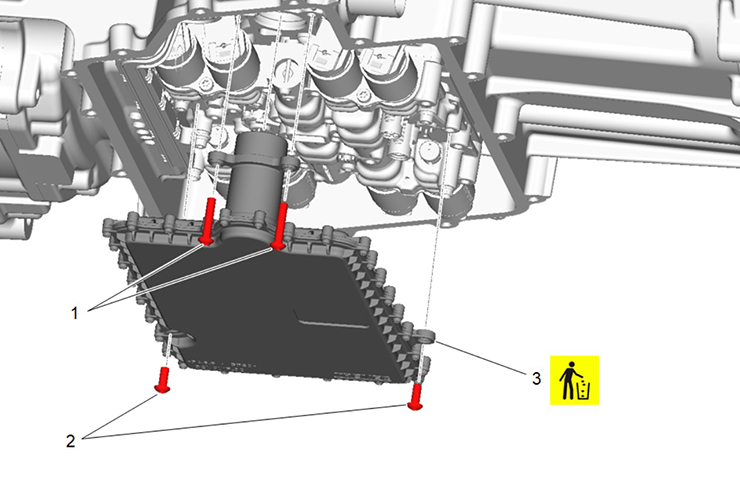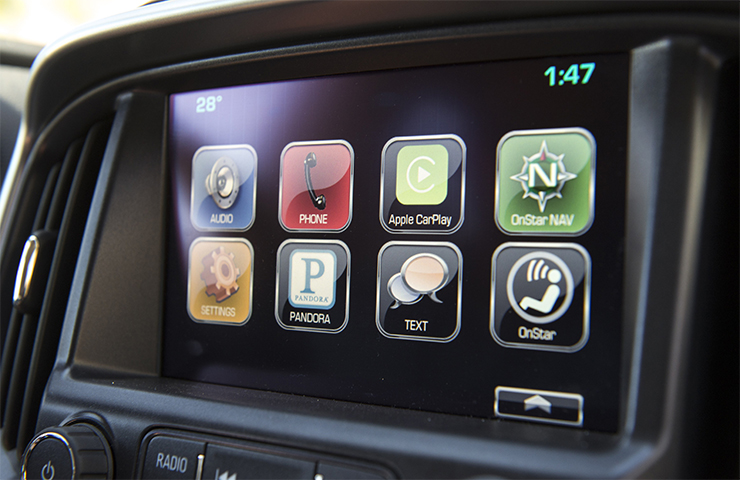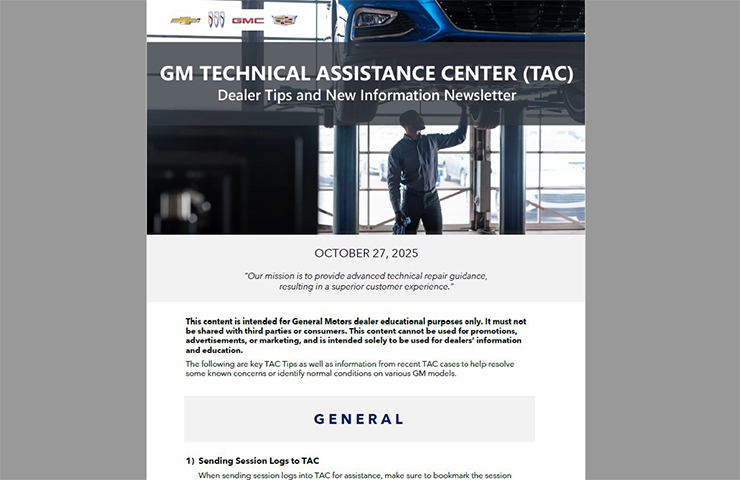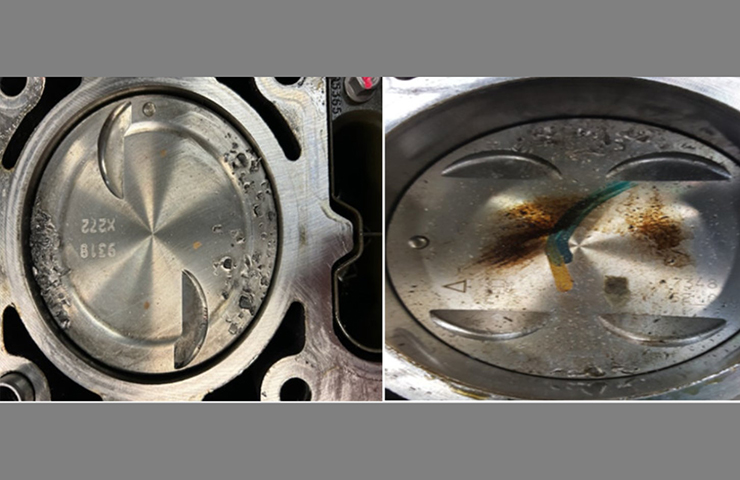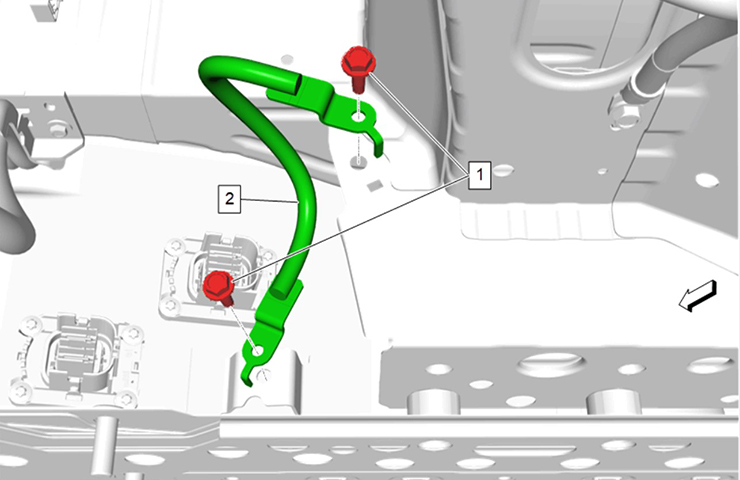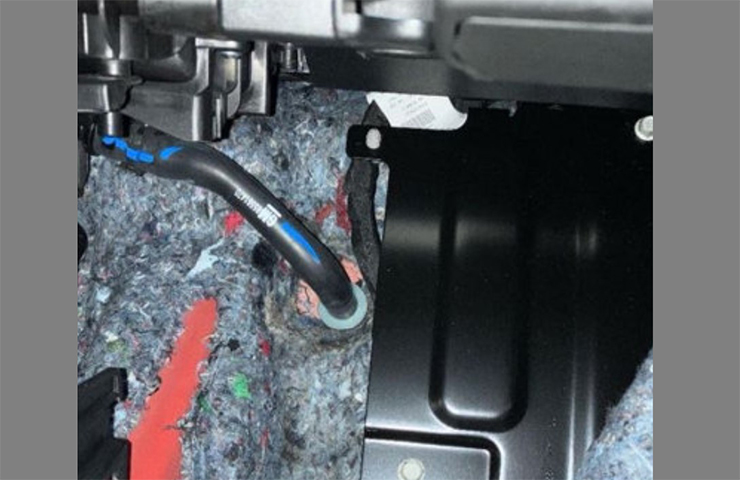The Advanced Trailering System available on the 2019-2020 Silverado 1500 and 2020 Silverado HD (Fig. 18) and the ProGrade Trailering System available on the 2019-2020 Sierra 1500 and 2020 Sierra HD features an in-vehicle trailering app (RPO U1D) that uses the functions of several vehicle systems in order to deliver trailer lighting diagnostics, trailer tire pressure/temperature monitoring and trailer braking with an Integrated Trailer Brake Controller. For example, all trailer detections are identified by the Trailer Lighting Control Module while the trailer braking is controlled by the Trailer Brake Power Control Module.
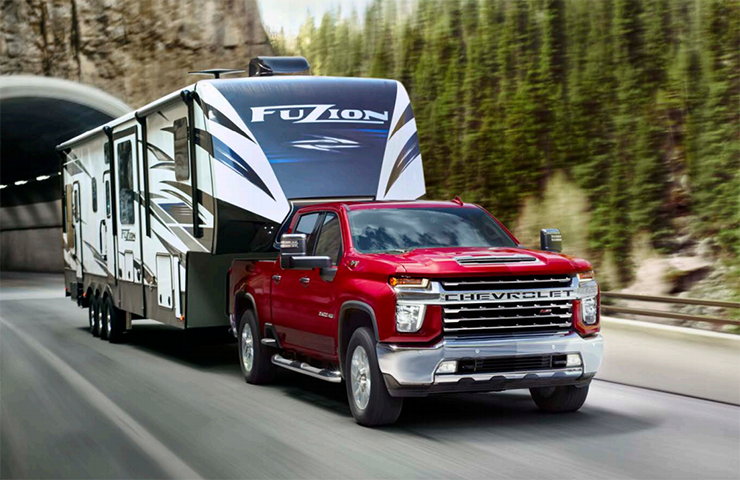 Fig. 18
Fig. 18
When diagnosing any trailering conditions, keep in mind that several systems are working together. Here are a few items to be aware of with the systems that function with the trailering app.
Trailer Braking
The trailer brake control system is used to control the amount of trailer braking power that is made available to trailers with brakes that require a controlled electrical output signal for actuation. The power output to the trailer brakes is based on the amount of braking being applied by the vehicle’s brake system, the type of trailer brakes detected, and the set amount of output (trailer gain).
Trailer braking components include:
- K38A Chassis Control Module-Auxiliary (2500/3500 HD models only)
- K160 Brake System Control Module (1500 models only)
- K133 Trailer Brake Power Control Module
- S76 Trailer Brake Control Panel
- Manual Trailer Brake Apply
- Trailer Gain Adjustment
- Trailer Brake Driver Information Center (DIC) Display
The S76 Trailer Brake Control Panel, located on the instrument panel, contains the trailer gain and manual apply switches that allow the driver to adjust the amount of output, or trailer gain, available to the Electric or Electric Over Hydraulic brakes. It also allows the driver to manually apply the trailer brakes. The trailer brake control panel and switches are used along with the trailer brake display page on the Driver Information Center to adjust and display power output to the trailer brakes. (Fig. 19)
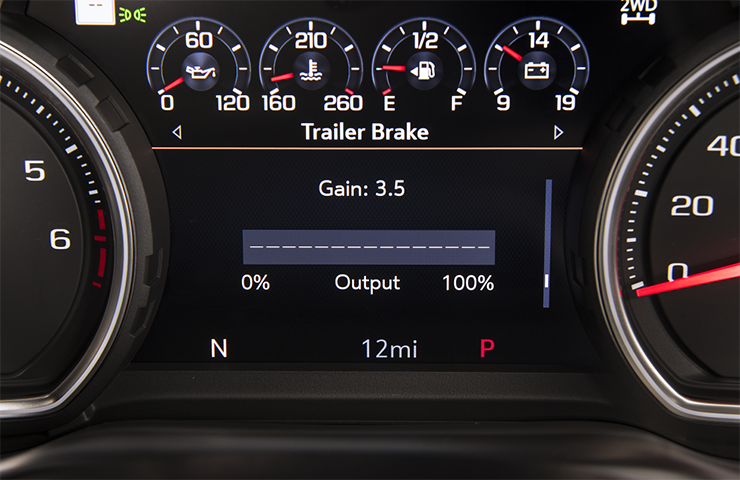 Fig. 19
Fig. 19
Trailer gain should be set for a specific trailering condition and adjusted any time vehicle loading, trailer loading or road surface conditions change. Setting the trailer gain properly is needed for the best trailer stopping performance. A trailer that is over-gained may result in locked trailer brakes. A trailer that is under-gained may result in not enough trailer braking.
Adjust trailer gain in 0.5 step increments up to a 10 gain setting by using the gain adjustment +/− buttons on the trailer brake control panel switch. Adjust the trailer gain to just below the threshold of trailer wheel lock-up. To turn the output to the trailer off, set the gain to zero.
Trailer Brake Gain Recall
After the electrical connection is made to a trailer equipped with electric brakes or electric over hydraulic brakes, the TRAILER CONNECTED message will be displayed momentarily on the DIC.
When a trailer is electrically connected, there also will be an option to create a profile, use a guest profile, or cancel. (Fig. 20) To turn the Trailer Detection Alert on, select ON in the Settings tab.
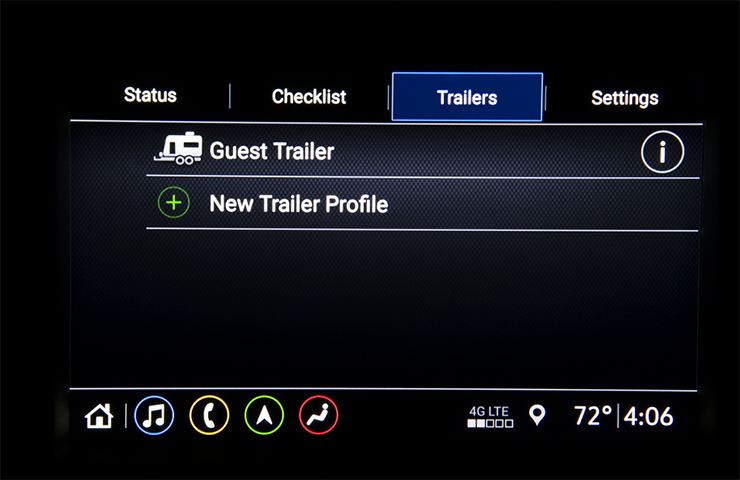 Fig. 20
Fig. 20
With a trailer connected and a trailer profile created, a trailer detection pop-up will appear on the infotainment screen with a list of all of the custom trailer profiles made on the vehicle. To load an existing trailer profile, select one of the profiles listed. Touching Cancel, Accessory/No trailer, or shifting the vehicle from Park, will select Accessory/No trailer as the active trailer profile.
The system can memorize the brake gain setting of a trailer profile or a guest trailer profile. When a trailer profile or guest trailer profile is selected, and a brake gain setting is set for that trailer profile, a quick notice on the infotainment screen will appear to indicate that the system has recalled that profile’s brake gain setting.
If a trailer profile is already active and the brake gain setting had been set for that trailer profile, the quick notice will trigger whenever the ignition is turned on.
If there was an error in setting the brake gain for a trailer profile, there will be a notification. (Fig. 21) The pop-up will not appear if the guest trailer profile is active or if there is no trailer connected.
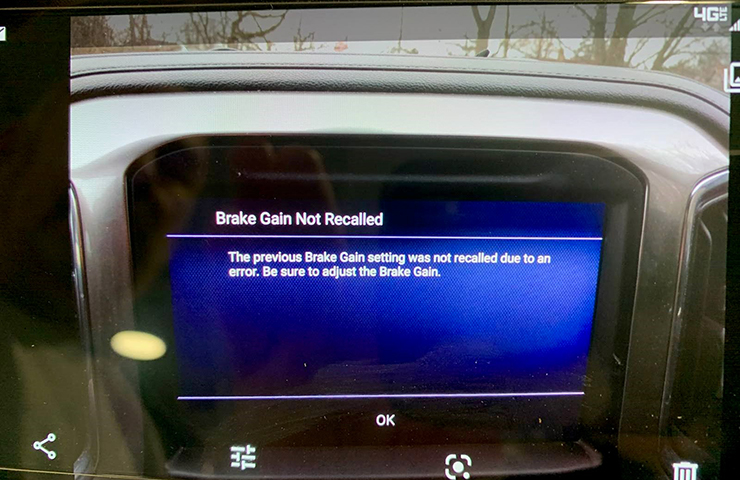 Fig. 21
Fig. 21
TIP: Once the trailer is connected, the ignition may require a cycle to start the connection process. When the process of recalling the trailer has started, it must complete before the vehicle is placed in Drive; otherwise, the process will be interrupted before the brake gain is recalled. If this occurs, the brake gain will have to be applied manually.
Tire Pressure Monitor System
The Trailer Tire Pressure Monitor System is designed to monitor the pressure of the trailer tires and warn the driver when a low-pressure condition exists. Trailer Tire Pressure Monitor System sensors for four tires are provided in the vehicle’s glove box. The system can accommodate a trailer with up to six tires if additional sensors are purchased from the dealership. Also, the system can be paired with up to five individual trailers. The sensors must be mounted onto each tire and wheel assembly, and the sensors must be learned by the vehicle.
Trailer Tire Pressure Monitoring Operation
The Trailer Tire Pressure Monitor System sensors monitor the air pressure in the trailer tires and transmit the trailer tire pressure readings to a receiver located in the vehicle. The tire pressure values can be viewed in the trailering app on the vehicle’s infotainment screen.
The sensor readings can only be received from a trailer that has axles no more than 23 feet from the rear of the truck. For example, if the first axle of a trailer is less than 23 feet, yet the second or third axle is farther, the system can only receive data from the first axle. (Fig. 22)
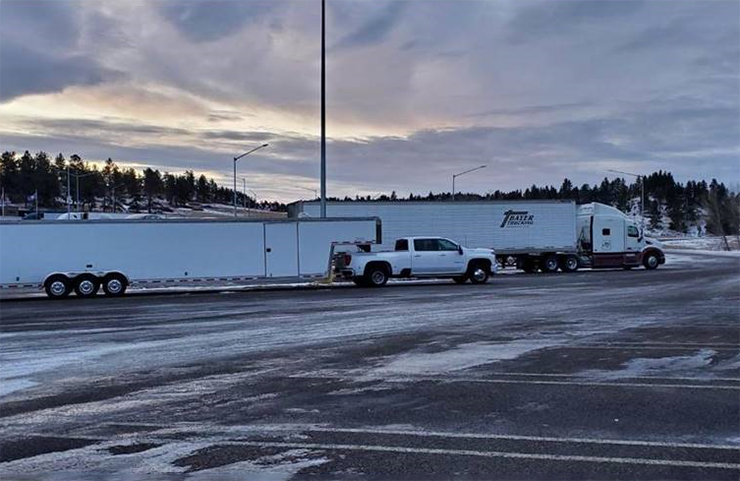 Fig. 22
Fig. 22
The system is compatible with trailer tires that have placard pressure values from 15 – 100 psi (103 – 689 kpa). The hole in the wheel for the tire stem must be 0.453 inches (11.43 mm) in diameter. Use of the pressure sensors on a wheel with a different stem hole size could result in loss of air from the tire.
In addition, the system monitors the temperature of the trailer tires. If the system detects a high temperature on one or more of the trailer tires, a warning message will be displayed on the DIC. Common causes for high trailer tire temperature are underinflation, overloading, or tire damage.
– Thanks to David MacGillis and Steve Dice

